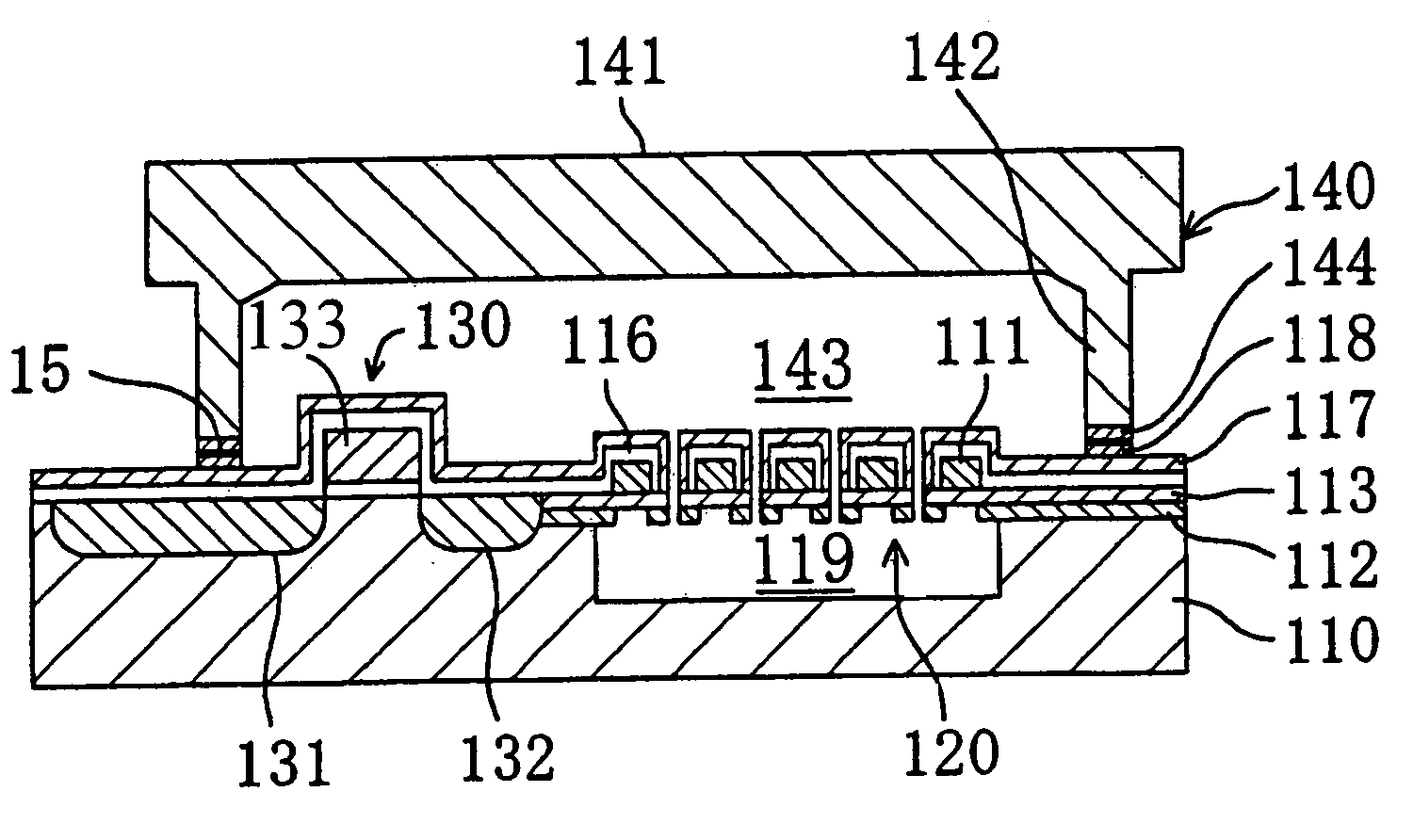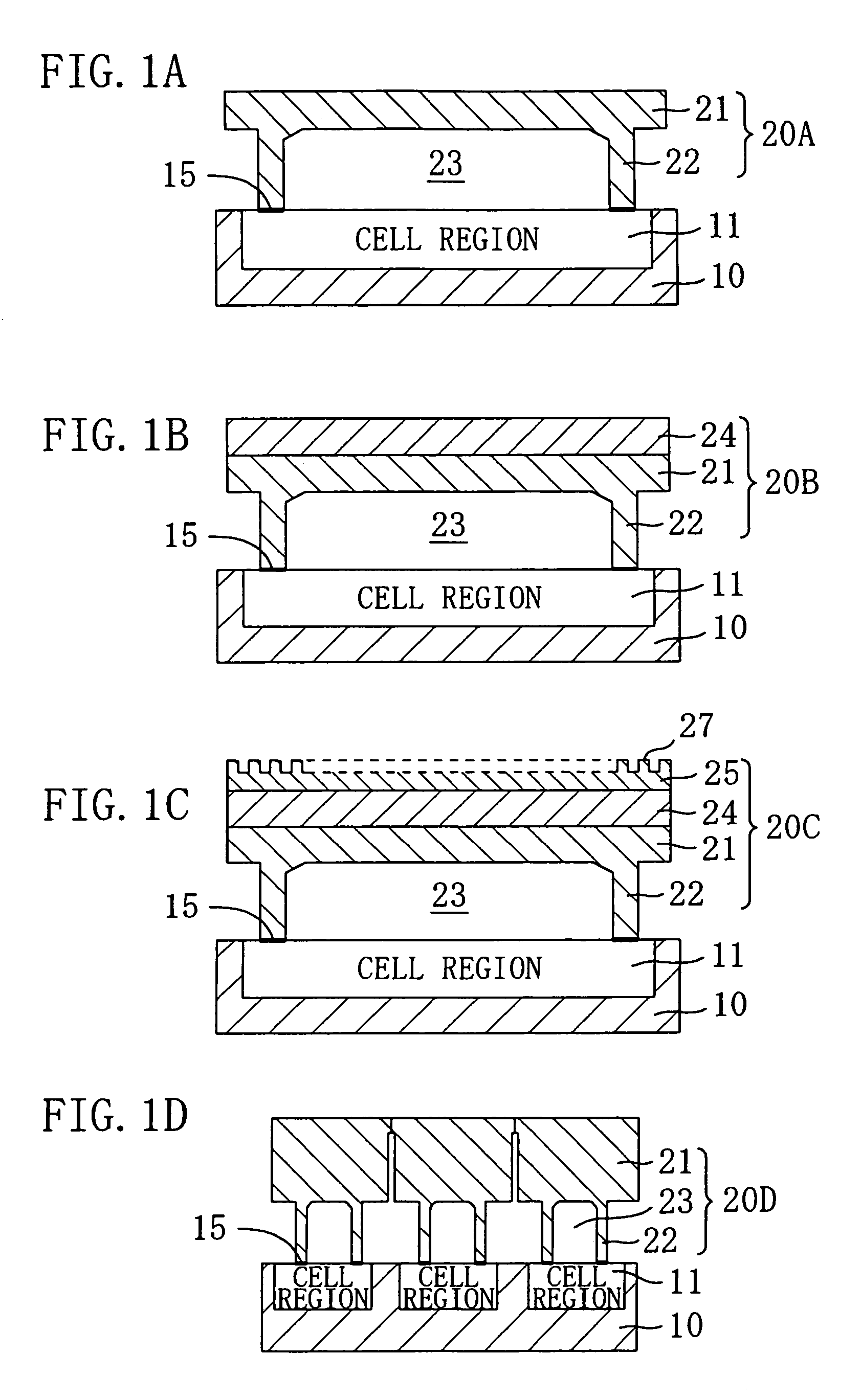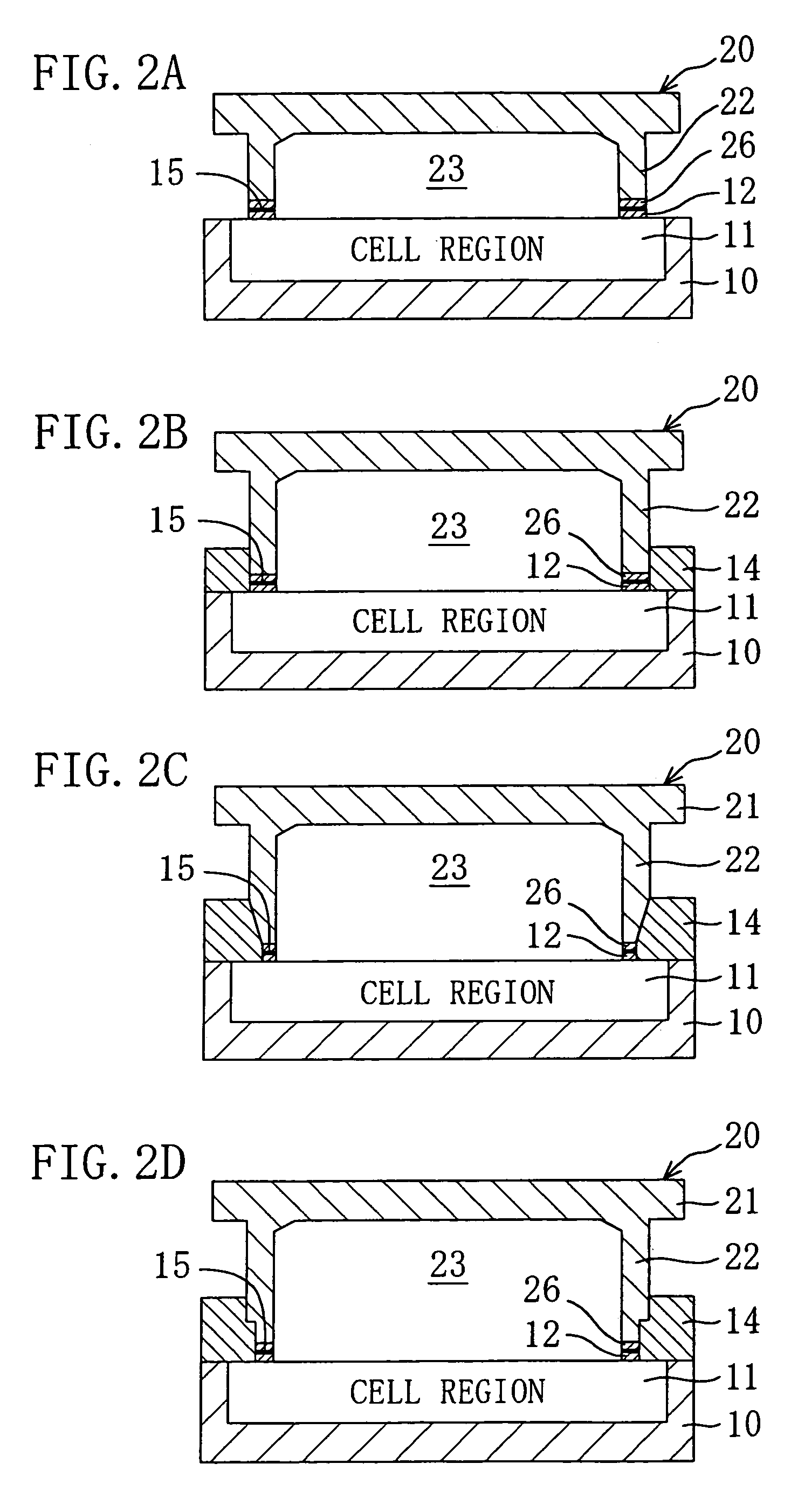Semiconductor-based encapsulated infrared sensor and electronic device
a technology of infrared sensor and semiconductor, applied in the field of semiconductor-based encapsulated infrared sensor and electronic device, can solve the problems of high percent of defective devices, deterioration of vacuum, and broken wafers, and achieve the effect of increasing the function of holding the atmosphere and strong joining
- Summary
- Abstract
- Description
- Claims
- Application Information
AI Technical Summary
Benefits of technology
Problems solved by technology
Method used
Image
Examples
embodiment 1
[0100]Next, description will be made for an embodiment 1 applying the electronic device according to the invention to a discrete type of infrared sensor.
[0101]FIGS. 4A and 4B are a cross-sectional view and an electrical circuit for illustrating an infrared sensor according to Embodiment 1 of the invention, respectively.
[0102]As shown in FIG. 4A, the infrared sensor of the present embodiment comprises a Si substrate 110 having a thickness of 300 μm, a resistance element (bolometer) 120 provided on the Si substrate 110, a switching transistor 130 provided on the Si substrate 110 for turning on and off a current to the resistance element 120, and a cap body 140 for holding the area having the resistance element 120 placed thereon in an atmosphere of reduced pressure. The total size of this infrared sensor is about several mm. Above the Si substrate 110, there are provided the resistance body 111 patterned into a fanfold (Z-fold)-shape, a silicon nitride film 112 and a silicon oxide fil...
embodiment 2
[0150]FIG. 9 is an electrical circuit for illustrating the configuration of an infrared area sensor according to Embodiment 2 of the invention. The concrete structure of the infrared area sensor according to the present embodiment is shown in FIG. 13.
[0151]As shown in the same drawing, a main body substrate is provided with a cell array in which a large number of cells A1–E5 each having a bolometer 201 and a switching transistor 202 are disposed in matrix-like arrangement. Although the size of one cell is, for example, about 40 μm–50 μm, the size is adequate to be larger than 20 μm corresponding to about two times the wavelength of infrared radiation to be detected. The gate electrodes of the switching transistors 202 in each cell are connected to selection lines SEL-1-SEL-5 extending from a vertical scanning circuit 209 (V-SCAN). One end of the bolometer 201 in each cell is connected to a power supply line 205, the sources of the switching transistors 202 are connected to data line...
embodiment 3
[0165]FIG. 12 is a cross-sectional view for showing an example of a micro vacuum transistor having a vacuum dome structure according to Embodiment 3 of the invention. The micro vacuum transistor according to the present embodiment comprises a sapphire substrate 201, an n-GaN layer 202 provided on the sapphire substrate 201 and functioning as an electron supplying layer, an AlxGa1−xN layer 203 provided on n-GaN layer 202 and configured as a composition gradient layer having composition approximately continuously changed and functioning as a electron drift layer, an AlN layer 204 provided on the AlxGa1−xN layer 203 and functioning as a surface layer, a lower electrode 205 provided on the n-GaN layer 202, a surface electrode 206 provided on the ALN layer 204 and forming a Schottky contact with the AlN layer 204, and a first insulating film 207 provided on the AlN layer 204 and having an opening portion. Further, a thin film portion 206a of the surface electrode 206 is formed on the reg...
PUM
 Login to View More
Login to View More Abstract
Description
Claims
Application Information
 Login to View More
Login to View More - R&D
- Intellectual Property
- Life Sciences
- Materials
- Tech Scout
- Unparalleled Data Quality
- Higher Quality Content
- 60% Fewer Hallucinations
Browse by: Latest US Patents, China's latest patents, Technical Efficacy Thesaurus, Application Domain, Technology Topic, Popular Technical Reports.
© 2025 PatSnap. All rights reserved.Legal|Privacy policy|Modern Slavery Act Transparency Statement|Sitemap|About US| Contact US: help@patsnap.com



